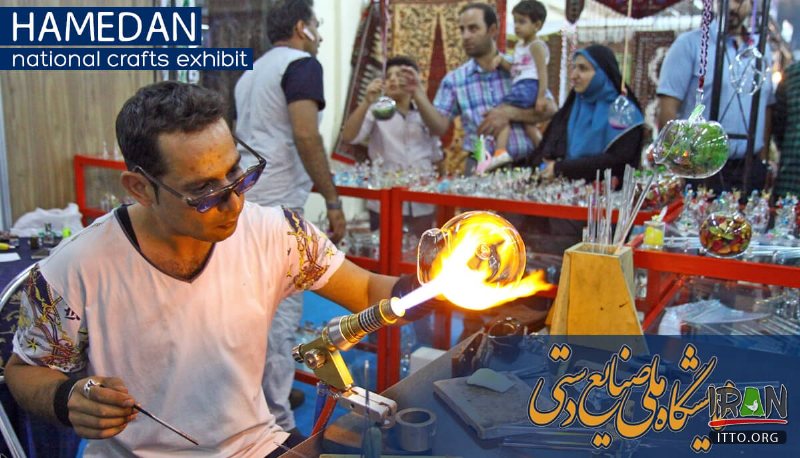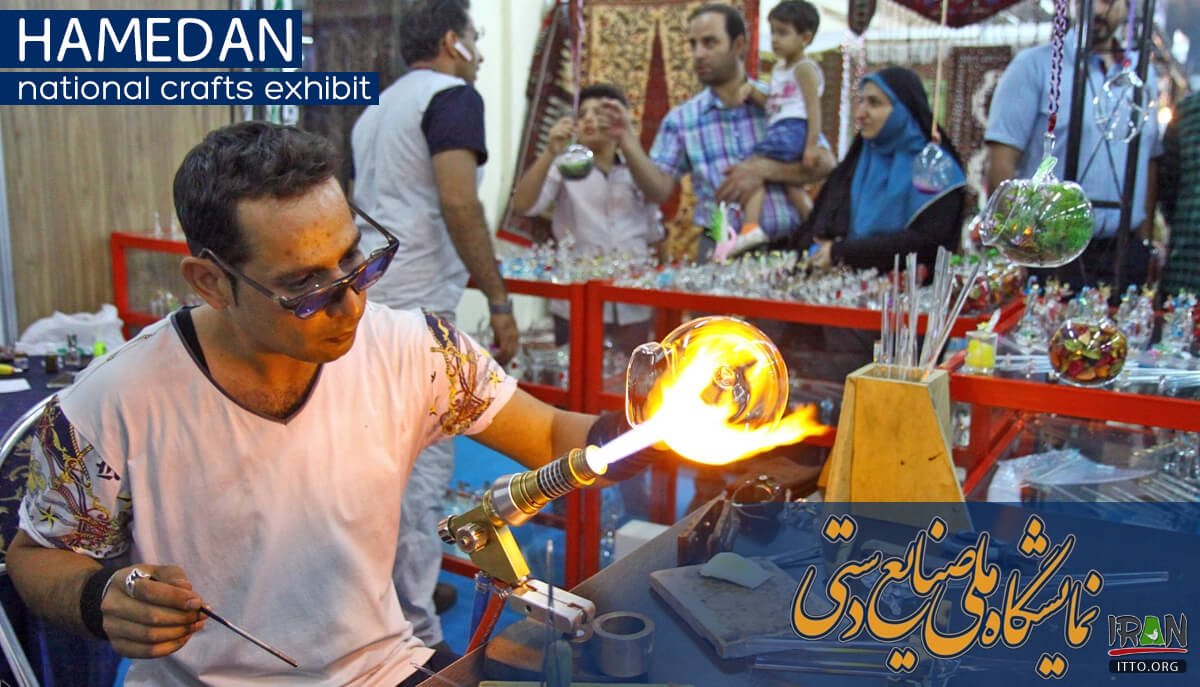A total of 182 stalls, set up in an area of about 2,500 square meters, are showcasing visitors works made in the provinces of Lorestan, Isfahan, South Khorasan, Chaharmahal-Bakhtiari, Zanjan, Golestan, Yazd, Sistan-Baluchestan and Hamedan.
Running through October 25, the sales exhibit offers leatherwork, metalwork, woodwork, traditional embroidery, painting glassware, potteries, ceramics, semi-precious stones, and embossed arts amongst dozens of other arts and crafts.
Handicrafts exports from the Islamic Republic reached $289 million in the past Iranian calendar year (ended March 20), demonstrating three percent growth year on year, according to data compiled by the Ministry of Cultural Heritage, Tourism and Handicrafts.
Traditional ceramics, pottery vessels, handwoven cloths as well as personal ornamentations with precious and semi-precious gemstones are among Iranian exports to Iraq, Afghanistan and Germany, the U.S., the UK, and other countries.
Known in classical times as Ecbatana, Hamedan was one of the ancient world’s greatest cities. Pitifully little remains from antiquity, but significant parts of the city center are given over to excavations, and there’s a scattering of historical curiosities.



